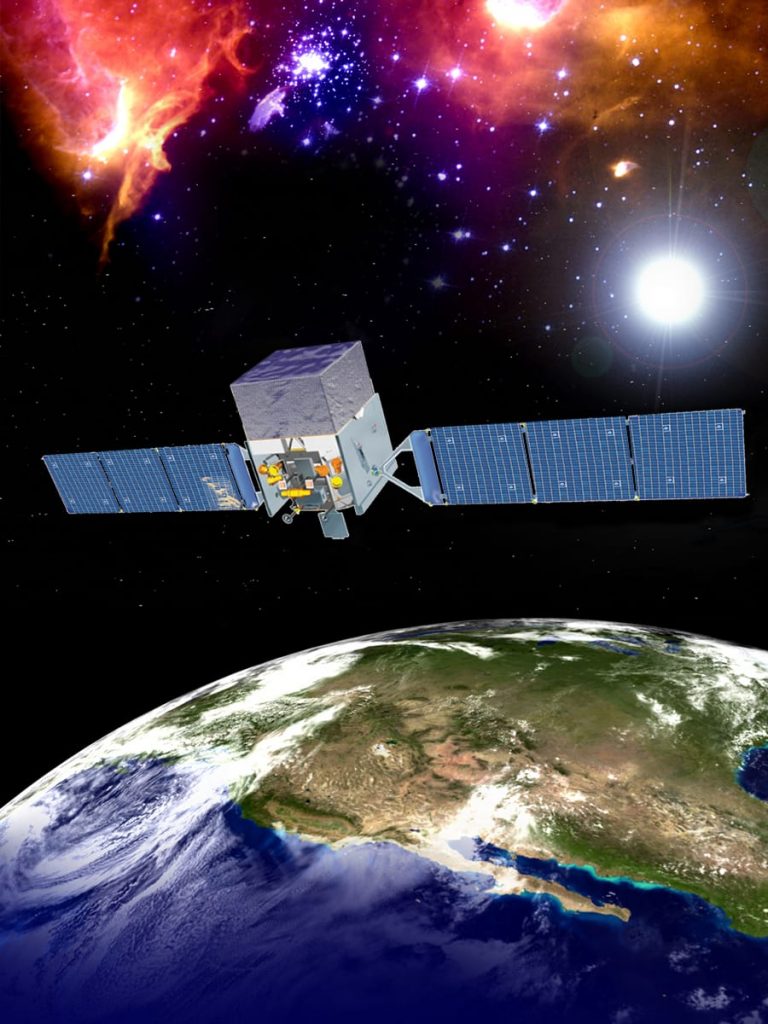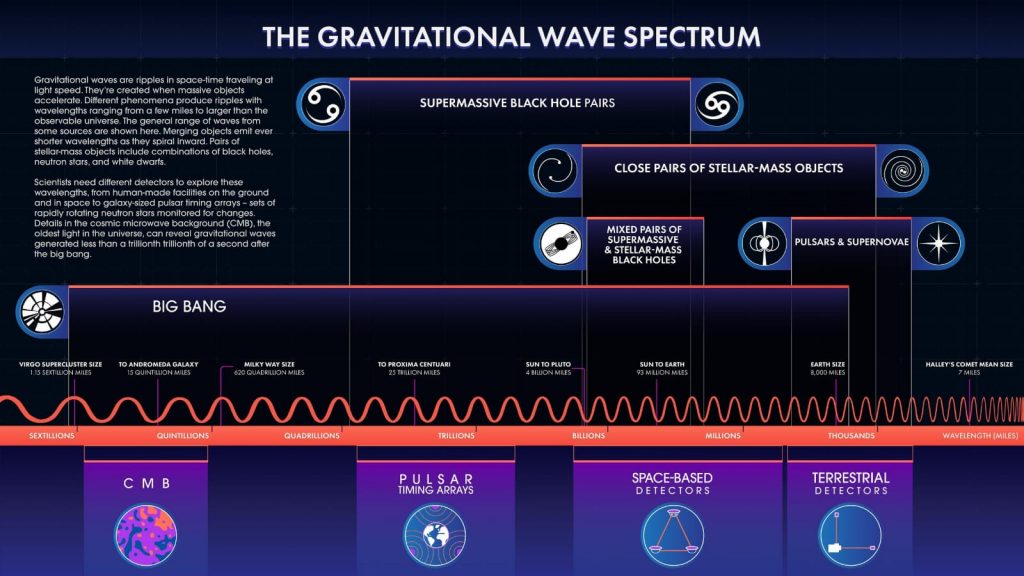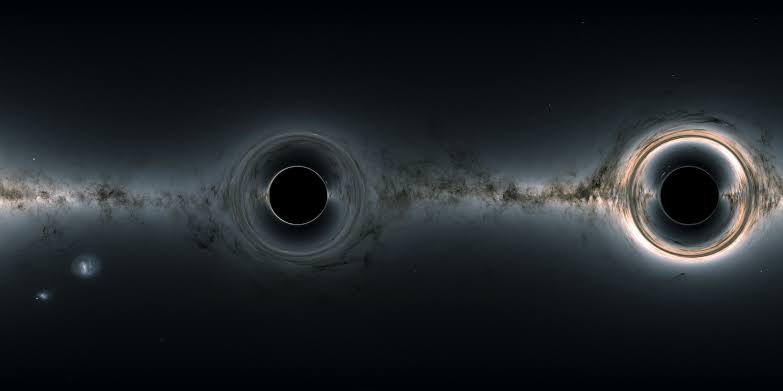Our universe is a disordered sea of cosmic ripples in space-time called gravitational waves. These ripples would travel at the speed of light, carrying with them information about their origins, as well as hints to the nature of gravity.
Astronomers assume that waves from Monster black hole orbiting pairs in distant galaxies are light-years long and have been attempting to observe them for a quite amount of time. NASA’s Fermi Gamma-ray Space Telescope has helped them to bring them one step closer.
Role Of The Fermi Telescope

This telescope detects gamma rays, the highest energy form of light. An international team of scientists have studied more than a decade of data collected from pulsars, which are the fast-spinning stars that exploded into supernovae.
They were looking for small changes in the arrival time of gamma rays from this pulsar, a change that could be caused by light passing through gravitational waves on its way to Earth, but never found.
The waves were not detected, but analysis shows that these waves may be within Fermi’s reach with more observations.
“We were a little surprised when we found that Fermi could help find long gravitational waves,” told Matthew Kerr, who is a research physicist at the US Naval Research Laboratory in Washington. “It is new to the fray”.
The Fermi Gammaray Space Telescope is a collaboration of astrophysicists and particle physicists operated by Goddard. Fermi was developed in association with the US Department of Energy, with important contributions from scientific institutions and partners from France, Germany, Italy, Japan, Sweden and the U.S. searches for years. But Fermi and gamma rays have some special properties that together make them very powerful tools in this research.
Results Of The Study
The results of the study, which was led by Kerr and Aditya Parthasarathy, a researcher at the Max Planck Institute for Radio Astronomy in Bonn, Germany, were published online by the journal Science on April 7.
When a massive object is accelerated, it creates gravitational waves that travel at the speed of light. The ground-based laser interferometric gravitational wave observatory, which first detected gravitational waves in 2015, can detect ripples tens to hundreds of miles long from crest to crest through the Earth in a fraction of a second. Future space-based laser interferometer antennas will capture wavelengths from millions to billions of miles.
Expectations Of The Scientists?
Kerr and his team are looking for waves that are light years or trillions of miles long and take years to travel to the Earth. These long ripples are part of the gravitational wave background, a sea of random waves created in part by a pair of supermassive black holes at the center of galaxies that merge throughout the universe.
How To Find These Waves?

Scientists need a galaxy-sized detector called a pulsar time array to find these waves. This array uses a specific set of millisecond pulsars that spin as fast as a blender blade. Millisecond pulsars propagate a beam of radiation ranging from radio waves to gamma rays out of our field of vision and appear to pulse incredibly regularly, like a space clock.
Since a long gravitational wave travels between one of these pulsars and Earth, it delays or accelerates the arrival of light by a billionth of a second. Scientists hope to be able to detect gravitational waves passing through pulsars by looking for specific patterns of momentum changes between the pulsars in the array.
Radio astronomers have been using the time arrays of pulsars for decades, and their observations are most sensitive to these gravitational waves. However, interstellar effects complicate radio data analysis. The universe is dotted with such floating electrons. Light years later, the effects combine to distort the path of radio waves. This changes the arrival time of the pulses at different frequencies. Gamma rays do not suffer from these complications, providing both additional probes and independent confirmation of radio results.
The Fermi results are already 30% better than radio pulsar timers when potentially detecting gravitational-wave backgrounds,” said Parthasarathy. “After five more years of collecting and analyzing pulsar data, the effect will be the same, with the added bonus of not having to worry about all the free electrons.”
